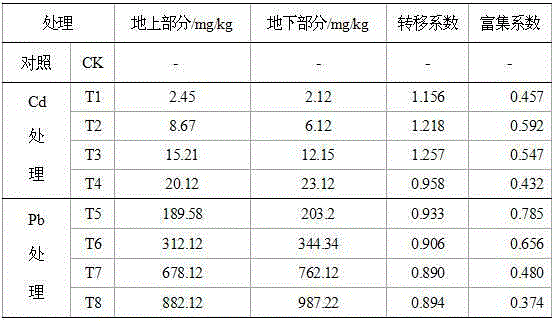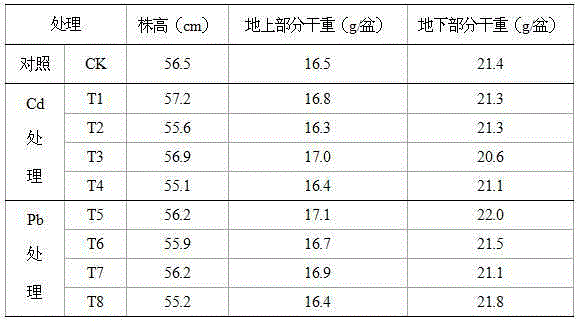Method for screening lead/cadmium repair tolerant plants from metal smelting region
A technology for metal smelting and cadmium tolerance, applied in the field of phytoremediation, can solve the problems of short plants, complex screening process, poor environmental adaptability, etc., and achieve the effects of strong pertinence, simple screening process, and strong heavy metal tolerance
- Summary
- Abstract
- Description
- Claims
- Application Information
AI Technical Summary
Problems solved by technology
Method used
Image
Examples
Embodiment Construction
[0023] 1. Survey of main plant species in metal smelting areas
[0024] In the metal smelting area, according to on-site surveys, the main crops are corn, potato, rice, eggplant, sweet potato, radish, tomato, etc., and the main wild plants are mugwort, purple flower buddha, quince, artemisia annua, willow chrysanthemum, oxtail Artemisia etc.
[0025] 2. Screening of plants that accumulate heavy metals in metal smelting areas
[0026] Select corn, potatoes, eggplants, and sweet potatoes from farmland around the smelting area, wild plants with large biomass such as mugwort and Buddleia, and wild plants with wide distribution. Collect corn, potatoes, sweet potato fruits, quinces, mugwort, aboveground and underground parts of Buddleia chinensis, etc., and analyze the content of heavy metals lead and cadmium in the laboratory.
[0027] Table 1 Heavy metal content of representative wild plants and crops (mg / kg)
[0028]
[0029] It can be seen from Table 1 that the heavy metal...
PUM
 Login to View More
Login to View More Abstract
Description
Claims
Application Information
 Login to View More
Login to View More - R&D
- Intellectual Property
- Life Sciences
- Materials
- Tech Scout
- Unparalleled Data Quality
- Higher Quality Content
- 60% Fewer Hallucinations
Browse by: Latest US Patents, China's latest patents, Technical Efficacy Thesaurus, Application Domain, Technology Topic, Popular Technical Reports.
© 2025 PatSnap. All rights reserved.Legal|Privacy policy|Modern Slavery Act Transparency Statement|Sitemap|About US| Contact US: help@patsnap.com



